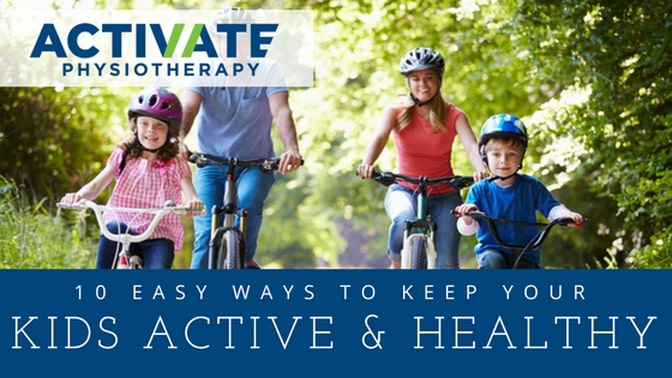Being active is essential for so many aspects of our health. Scarily up to 80% of Australian children aged 5-17years aren’t getting the recommended levels of physical activity.
Combined with rising rates of childhood obesity, it’s especially important for parents to make sure their children are engaging in a variety of enjoyable and age-appropriate physical activities each day. Whether it’s riding their bike to school, taking the dog for a walk, playing backyard cricket, dancing around the living room or playing chasey, there are plenty of fun and easy ways for kids to get moving.
Here are 10 suggestions from the Heart Foundation to help parents encourage active and healthy kids:
- Work activity into your daily routine. Find ways to alter your normal routine to allow more physical activity to be embedded throughout the entire day. This could be in the form of active transportation, free play, family-orientated physical activity and everyday incidental activity like chores.
- Encourage sports participation. The first step is to know what organised sports activities are available, and to make sure your kids know what options they have. Children should be encouraged to try a few different sports to find ones they might enjoy. Some local organisations offer a multi-sport programs where children work on skills from a different sport every 2 weeks. This way they can learn a range of new skills while trying out each sport.
- Provide opportunities for active play. Encourage children to spend time outdoors and engage in non-structured active play activities, such as climbing trees, playing on playground equipment, active games like chasey or tug-of-war, or jumping rope. Young people need to be stimulated and allowed to explore the various ways they can be active. Taking kids to the park or on a bush walk varies their environment and can provide natural stimulation to be active and curious.
- Try active transportation. Getting the kids to walk or ride to school at least part of the way is an excellent way to fit more physical activity into their daily routine. Other than school journeys, replacing short car trips to a range of destinations such as local parks, local shops and friend’s houses with walking or cycling is feasible will have a range of benefits both to the child and the environment. One kilometre is about 15 minutes of walking.
- Be involved. It is important that physical activity participation for children and young people be facilitated, supported and encouraged in a number of different ways by parents. For example, by attending training sessions, walking with children to various locations, taking the time to play with their children both indoors and outdoors.
- Limit screen time. Adopt strategies to reduce sedentary behaviours at home. Some ideas might be removing screens from children’s bedrooms, setting time limits for screen use each day and encouraging increased family physical activity participation, The recommended Australian screen time guidelines suggest no more than 2 hours per day for children 5-17 years and 1 hour per day for 2-to-4-year-olds.
- Make active family time. Reduce the amount of sedentary activity you do as a family – for example, watching TV together. Instead, try to incorporate more physical activities like going for a walk, playing a game in the park or taking a family bike ride.
- Break it up. Physical activities can be performed in one continuous session each day or in multiple sessions (at least 10 minutes at a time is advised) to make up the recommended amount.
- Lead by example. Act as healthy role models by limiting your own screen time for entertainment purposes and engage in physical activity throughout the day where you can.
- Focus on health, not just weight. This is great advice for everyone, not just children. There are many other benefits to being healthy and active as well as weight management. Focusing on overall health including improved aerobic fitness, mental health, cognitive function and academic achievement and cardiometabolic health is a positive way to encourage active living.
It’s important for all families to be aware of how much physical activity they should be doing each day. The Australian Government has published physical activity guidelines recommended for each age group You can read more about the guidelines here.

